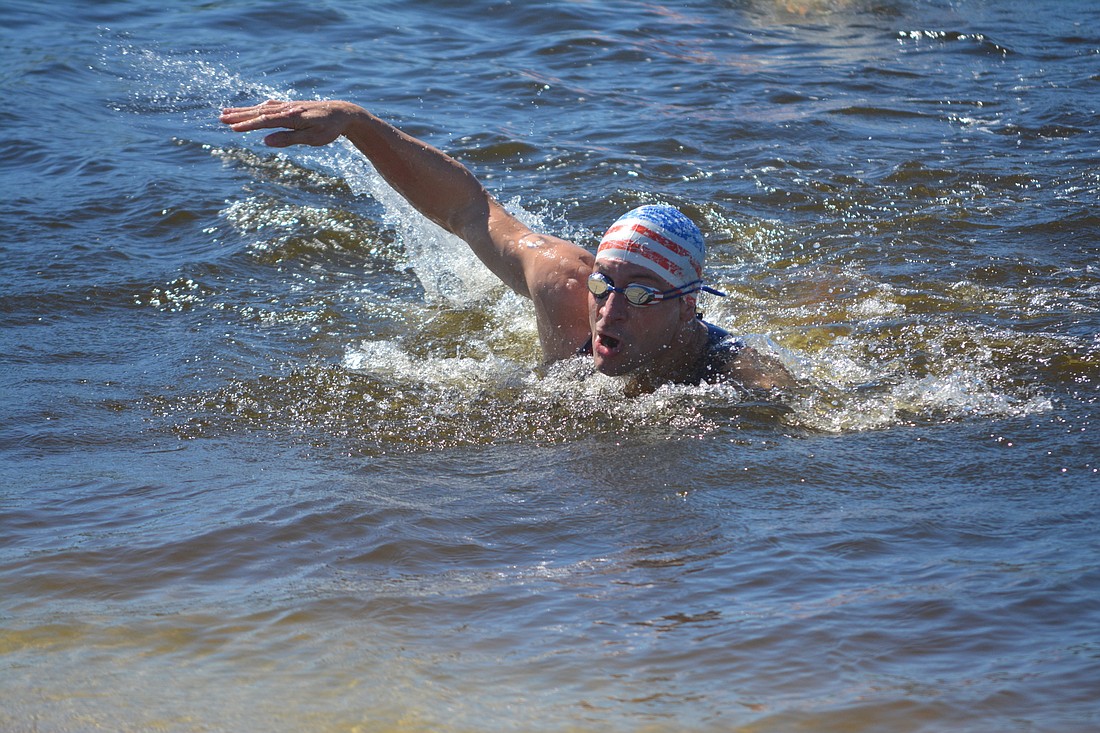- July 4, 2025
-
-
Loading

Loading

This had to be a sport for the cuckoo.
I’m pretty sure running 1,600 meters, swimming 200 meters and then running another 1,600 meters would be the end of me, but that’s what biathle competitors did this weekend at Nathan Benderson Park.
The finish of the 2016 UIPM Biathle/Triathle World Championships seemed like a near-death experience. Flushed faces stared into nothingness as taxed lungs audibly gasped for air. The penned, post-finish area featured puddles of
sweat and other bodily fluids.
Some athletes stumbled and fell to the ground, their legs unable to support them any longer. Most of these athletes did not cry or scream. They were too weary to make a sound.
Triathle and biathle are subsets of Modern Pentathlon, which combines laser pistol shooting, fencing, swimming, equestrian show jumping and running. Triathle eliminates the fencing and equestrian parts of that equation, and biathle takes it one step further by getting rid of shooting. The sports are done in one go, with a transition area linking the land and sea aspects of the sports. The clock does not stop during transitions, so competitors never get a chance to catch their breath once the event starts.
I asked Nathan Schrimsher, a 24-year-old U.S. Olympian in Modern Pentathlon, why he puts his body through this immense stress.
“To be honest, I’m still wondering the same thing,” Schrimsher said.
Schrimsher said the toll on the body, especially during training, is not fun. He gets joy out of where the sport takes him, which was to Rio de Janeiro during the 2016 Olympic Games. He’s been around the world and back, and made new friends everywhere he’s gone.
He does about 12 pentathlons a year, but this was his first big-time triathle event, and even he looked fried at the finish line, pouring water on the back of his neck and head to cool down as he bent over at the knees.
Schrimsher knows the value of a great medical staff. At an event like the World Championships, which featured both elite races and open races, volunteers have to be constantly on their toes, ready for any emergency that may arise.
Thankfully, the volunteers on hand were up to the challenge.
Drs. Val Gambina and Joanne Fava work together at the Functional Academy of Sports Training and Rehab, or FASTAR, on Cooper Creek Boulevard in Bradenton. They’ve been volunteering at Benderson Park since 2011.
Gambina was named chief medical officer of the park three years ago. Fava has traveled with the USA Pentathlon team as a team physician. They both still volunteer their time nearly every weekend, making sure all athletes using the park get the medical care they deserve.
The biggest thing Gambina gets out of volunteering, she said, is practice.
“We call it practice because every day is something new,” Gambina said. “You always add to the repertoire of medical techniques that you do to help people. It makes you a better doctor.”
Gambina and Fava take the things they experience at events like this and bring them back to their practice. The goal is always to help patients heal as fast as possible, and the more they learn, the more successful they’ll be in the future.
Dr. Jimbo Haley, another medical volunteer at the World Championships, knows all about the ins and outs of running, shooting and swimming: He competed in the 1992 Olympic games in Barcelona in Modern Pentathlon, finishing 25th individually and third on Team USA. Haley agreed with Gambina about learning new techniques, recalling a chat with a Ukrainian physiotherapist in which the two doctors swapped ideas on how to more rapidly treat patients.
Haley said a lot of the joy he gets from working with athletes stems from the instant reactions. It’s not like day-to-day doctoral work, when you have to wait days or weeks to know if a treatment is working. At races, results are seen immediately, and it’s rewarding, Haley said.
At the championships, all three volunteers were constantly scrambling from the finish line to the transition area and back. They might have done as much running as the athletes themselves, albeit over a much longer period of time.
I was impressed by the efficiency of the whole operation. All finishers were asked if they were OK, then asked again. Any medical supply that was needed, they had in one of their many kits. Perhaps most importantly, they made the injured feel calm. A lot of the athletes who collapsed at the end line just had to drink water and walk off the pain. The doctors explained this to them in a voice that was authoritative yet calm.
There’s a 100 percent chance I would be one of the zombie-eyed competitors at the end of the race if I attempted it. I would be lightheaded and in serious pain, but at least I’d know I’d receive excellent care if I needed it. I guess if you're going to be a crazy athlete, that's what you need.